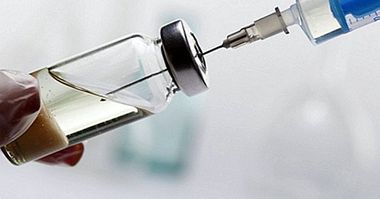These are the most used drugs against schizophrenia
Schizophrenia is one of the most well-known mental disorders of history, and even today receives a lot of attention. The presence of hallucinations, delusions and disorganized behaviors, together with a possible negative symptomatology such as alogia, has generated throughout the years a deep suffering to those who suffer it, being often stigmatized and institutionalized.
It would not be until the appearance of the first psychotropic drugs that they would not begin to be able to control their symptoms effectively. Since then, a large number of substances have been investigated and synthesized, the main objective of which is to control the symptoms of schizophrenia. In fact, even today pharmacological treatment is a fundamental element. In this article we are going to do a little review of the most used drugs against schizophrenia , as well as its disadvantages and limitations.
- You may be interested: "The 6 types of schizophrenia and associated characteristics"
Antipsychotics: basic operation
Antipsychotics or neuroleptics are a group of drugs that have as their main objective the treatment of psychotic symptoms by chemical changes in the brain . Its mechanism of action is based on the regulation of dopamine levels in the brain.
The main one is the mesolimbic pathway, which in patients with schizophrenia has an excess of dopamine that would end up generating the experimentation of positive symptoms such as hallucinations. At this point, all existing antipsychotics aim to reduce the amount of dopamine in this area in order to reduce psychotic symptoms, Acting specifically on the D2 receivers , which blocks.
The first antipsychotics discovered worked very well in this sense, causing a large decrease in positive psychotic symptoms. However, there is another route that is also of great importance: the mesocortical. This pathway has in patients with schizophrenia a decrease in dopamine that causes the subject to manifest negative symptoms such as thought poverty or poverty and other alterations such as withdrawal and loss of skills.
Although the typical antipsychotics have the function of reducing the level of dopamine in the mesolimbic pathway, the fact is that they exert their action in a non-specific manner, causing this reduction to occur in other nerve pathways and even in other parts of the body. The mesocortical would be among the affected pathways.
Taking into account that the negative symptoms are caused by an absence or deficit of dopamine in it, the use of typical neuroleptics not only will not have an effect but may in fact harm and increase the negative symptoms. And in addition, other ways that act in a normative way are also negatively affected, being able to generate secondary symptoms very annoying and that can interfere with daily life. For this reason, the research was aimed at generating alternatives, eventually developing the so-called atypical neuroleptics.
These are known to also act as dopamine D2 receptor agonists, like the typical ones, but also acting on the serotonin level of the brain . Considering that serotonin has an inhibitory effect on dopamine secretion and that in the cortex there is a much higher level of serotonergic receptors than dopaminergics, reducing serotonin will cause that although the drug causes the dopamine to decrease in the cortex, the inhibition of an inhibitor ends up generating levels to be maintained. In this way, the level of dopamine in the mesolimbic pathway is reduced, but not in the mesocortical pathway, while secondary symptoms from other pathways are also reduced.
The most used psychopharmaceuticals against schizophrenia
Although the typical antipsychotics have historically been more used, the truth is that at present, due to the lower number of secondary symptoms and their greater effect on the negative symptomatology, in clinical practice, the most common is to find typical antipsychotics . Despite this, the typical ones continue being used with certain frequency. Below we can see some of the most used drugs against schizophrenia, both atypical and typical.
The most commonly used: atypical antipsychotics
Although at the level of controlling the positive symptomatology have a level comparable to the typical ones, the atypical antipsychotics have a series of great advantages in front of these. These include the existence of a certain effect on the negative symptoms and the lower risk and frequency of undesirable secondary symptoms.Despite this, they can generate sexual effects, arrhythmias, extrapyramidal effects linked to movement such as akinesia or tardive dyskinesia, hyperglycemia, changes in diet and weight, and other problems.
The most commercialized anti-schizophrenia drugs used in Spain They are the following, although there are many more:
Clozapine
One of the most known atypical neuroleptics. Clozapine has a good effect even in subjects who do not respond to other neuroleptics. Also in those who with other drugs suffer extrapyramidal symptoms due to the dopaminergic alteration in the nigrostriatal pathway (in fact it is considered the neuroleptic with less extrapyramidal effects).
Apart from about dopamine and serotonin, acts at the level of adrenaline, histamine and acetylcholine . However, it also generates metabolic changes, overweight and there is also a risk of agranulocytosis, with which its use is more limited than the rest of atypical ones and tends to be used as a second option.
Risperidone
In addition to schizophrenia, Risperidone is also used in the treatment of aggressive behavior in children with serious behavior disorders. Also in bipolar disorder and in autism.
Olanzapine
Another of the most well-known drugs against schizophrenia, olanzapain is used especially to combat both positive and negative psychotic symptoms. Like some of the above, it has also been used for the treatment of bipolar disorder, and in some cases for borderline personality disorder. It is one of the most effective antipsychotics, similar to clozapine but with greater serotonergic affinity (which will have a greater effect on negative symptoms)
As with the rest, Secondary symptoms include changes in appetite and weight, sexual problems (low libido and possible galactorrhea and gynecomastia), tachycardia and hypotension among many others.
- Related article: "Olanzapine: operation and effects of this psychopharmaceutical"
Aripiprazole
This type of atypical antipsychotic has been used for schizophrenia, but also for other disorders in which there is great agitation as in some cases of autism and major depressive disorder. It is a relatively new drug, synthesized in 2002 . It stands out for being a partial agonist of the D2 receptors (acting only depending on the dopamine levels of the pathway in question). It is effective in the treatment of positive, negative and affective symptoms. It does not generate problems of a sexual nature.
The most common typical neuroleptics
Even though at present they are much less used than atypical ones because they they usually generate more and more powerful side effects , it is common to find that some classic neuroleptics continue to be used in drug-resistant cases in which atypical drugs do not work or under certain conditions. In this sense, although there are many more, two stand out as the best known and most frequent.
Haloperidol
The best known of all antipsychotics, has been the most used until the birth of atypical neuroleptics and in fact continues to be used as a treatment for schizophrenia. Its injected use is frequent to treat acute crises and stabilize the patient , even if you later switch to another type of medication.
In addition to schizophrenia, it is used in other psychotic disorders (being very effective in the treatment of positive symptoms), or other disorders that generate psychomotor agitation: disorders by tics and Tourette syndrome, manic episodes or delirium tremens among others. Occasionally it has been used as an analgesic and antiemetic.
- Related article: "Haloperidol (antipsychotic): uses, effects and risks"
Chlorpromazine
Another of the most common and known antipsychotics, is in fact the first antipsychotic that was found . Effects and indications similar to haloperidol. Occasionally it has also been used for the treatment of tetanus and porphyria, or as a last option in the case of OCD.
- You may be interested: "Chlorpromazine: effects and uses of this psychoactive drug"
Antiparkinsonians
Due to the likelihood of extrapyramidal effects typical of neuroleptics (especially the typical ones), Antiparkinson medication is often added to the antipsychotic medication . In this sense, the use of elements such as Levodopa is frequent.
Reflection on its disadvantages and limitations
The pharmacological treatment of schizophrenia is essential and must occur continuously throughout the life cycle in order to prevent the presence of outbreaks. However, it is relatively common to find cases in which patients have suffered an outbreak after deciding to quit.
The truth is The consumption of psychoactive drugs continuously presents a series of disadvantages and limitations . In the first place, the continued consumption of a certain substance will generate that the body ends up taking a certain degree of tolerance toward it, with which the effects may become smaller.This is one of the reasons why it is not uncommon for changes in dosage or directly from medication (using other active ingredients).
Another major limitation of neuroleptics is that although they have a great effect on positive symptoms (highlighting hallucinations, delusions, agitation and disorganized behavior and speech) the effectiveness on negative symptoms (poverty of speech and thought) still leaves to be desired. In fact, typical antipsychotics or have an effect on the latter and they can even get worse. Fortunately, the atypical ones do have an effect on this symptomatology, although they still have a wide margin for improvement.
In addition, it highlights the great disadvantage that the presence of possible secondary symptoms generates. The most common (not in vain another name of the first antipsychotics was that of major tranquilizers) is excessive sleepiness and sedation, which can limit the creativity and cognitive ability of the subject. This can affect, for example, their performance in the workplace or in academics . Alterations may also appear at motor level, some of them affecting the extrapyramidal routes (although this is more frequent in the typical ones), and in some cases they also have an effect in the sexual area. In addition, weight gain, hypercholesterolemia and hyperglycemia are also favored.
They can be a risk factor for some diseases, and could be a risk for patients with some metabolic problems such as diabetes (its use being contraindicated in diabetic patients, with liver and heart problems). They are also not recommended during pregnancy and lactation or in subjects with dementia.
Finally, a limitation of the use of psychotropic drugs is the fact that in acute phases or people who do not accept their diagnosis there may be a high resistance or even forgetfulness of consumption. Fortunately in this sense some drugs have depot presentations, which are injected intramuscularly and they are released little by little into the bloodstream over time.
In this way, although the use of antipsychotics is essential to prevent outbreaks and keep the symptoms under control, we must bear in mind that it has its limitations and can generate some problems. This should lead to further research to find and synthesize new drugs that allow a much more specific action and that produces fewer adverse effects, as well as to assess and measure with great precision the type of medication and the doses we use in each case for such to produce the greatest possible welfare of the patient.



















